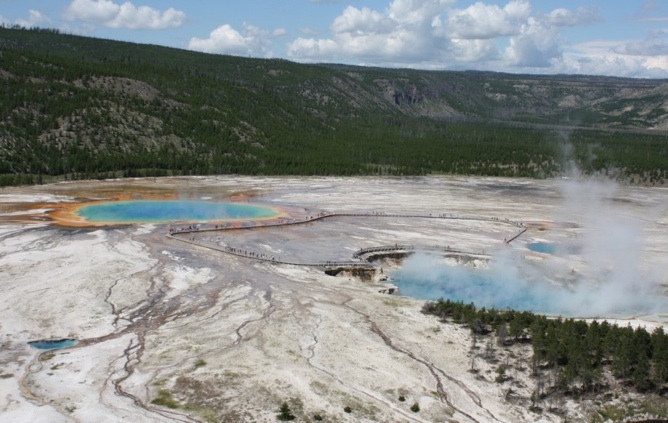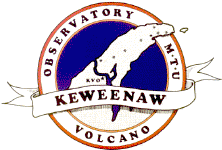Text

Text
Text


What's up with Yellowstone? Exploring the past and the fate of magma at the world's largest restless caldera.
Michigan State University
Yellowstone caldera, Wyoming is best known for three cataclysmic caldera-forming explosive ‘super’-eruptions at ~2.15 Ma, 1.26 Ma and 0.64 Ma. However, rhyolite lava eruptions, have been the most frequent volcanism at Yellowstone for >2.15 Ma. Notably, the Central Plateau Member, emplaced from 250 ka to 70 ka comprises > 20 lava flows for a combined volume >350 km3. The present-day caldera has among the highest volcanogenic degassing flux and largest hydrothermal system on Earth, with widespread seismicity. Such unrest is linked to the presence of very large volumes of basalt and rhyolite magma, and although there is no evidence of eruptible magma or any imminent eruption, the long-term future of volcanism is uncertain. This research sheds light on the long-term evolution of the Yellowstone magmatic system and eruption mechanisms by focusing on the most recent rhyolite intra-caldera lavas including Central Plateau, earlier-erupted (~600-480 ka) Upper Basin rhyolites and coeval (~300-80 ka) rhyolites erupted adjacent to the caldera. New major and trace element analyses suggest that the Upper Basin and Central Plateau rhyolites form two fractionation series of overlapping compositions in which pyroxene and plagioclase crystallizes first, later accompanied by sanidine ± quartz. Each group exhibits more differentiated compositions as lavas get younger. Extra-caldera lavas define a third series with distinct incompatible element signature. Mineralogy of lavas poorly matches what predicted by these fractional crystallization trends. Lava flows have low crystallinity (typically <10%) and throughout most samples, minerals have major and trace element compositions that do not reveal pronounced zoning or xenocrystic cores. Despite large variations of compatible elements compositions in glass among units, mineral-melt partition coefficients of trace elements in plagioclase (KDSr~23±2 (1), KDBa~ 3.3±0.9, KDEu~ 8.4±1.0), sanidine (KDSr~20±2, KDBa~30±6, KDEu~9.0±1.0), clinopyroxene, and of Ti in quartz (KD~0.16±0.014) are similar among lava flows over time and degree of differentiation, suggesting for in-situ crystallization in magma bodies isolated from their parent fractionating reservoir. Sieve texture and glass embayments in phenocyrsts are common, suggesting late-stage rapid crystal growth. These observations together argue for (1) three long-lived crystallizing magma bodies, (2) episodic melt segregation, and (3) in-situ rapid crystallization in the extracted melts. Reactivation of volcanism would thus involve transient large volumes of crystal-free magma. Lack of present-day evidence for these further argues against any imminent eruption, but justifies continued monitoring efforts.



